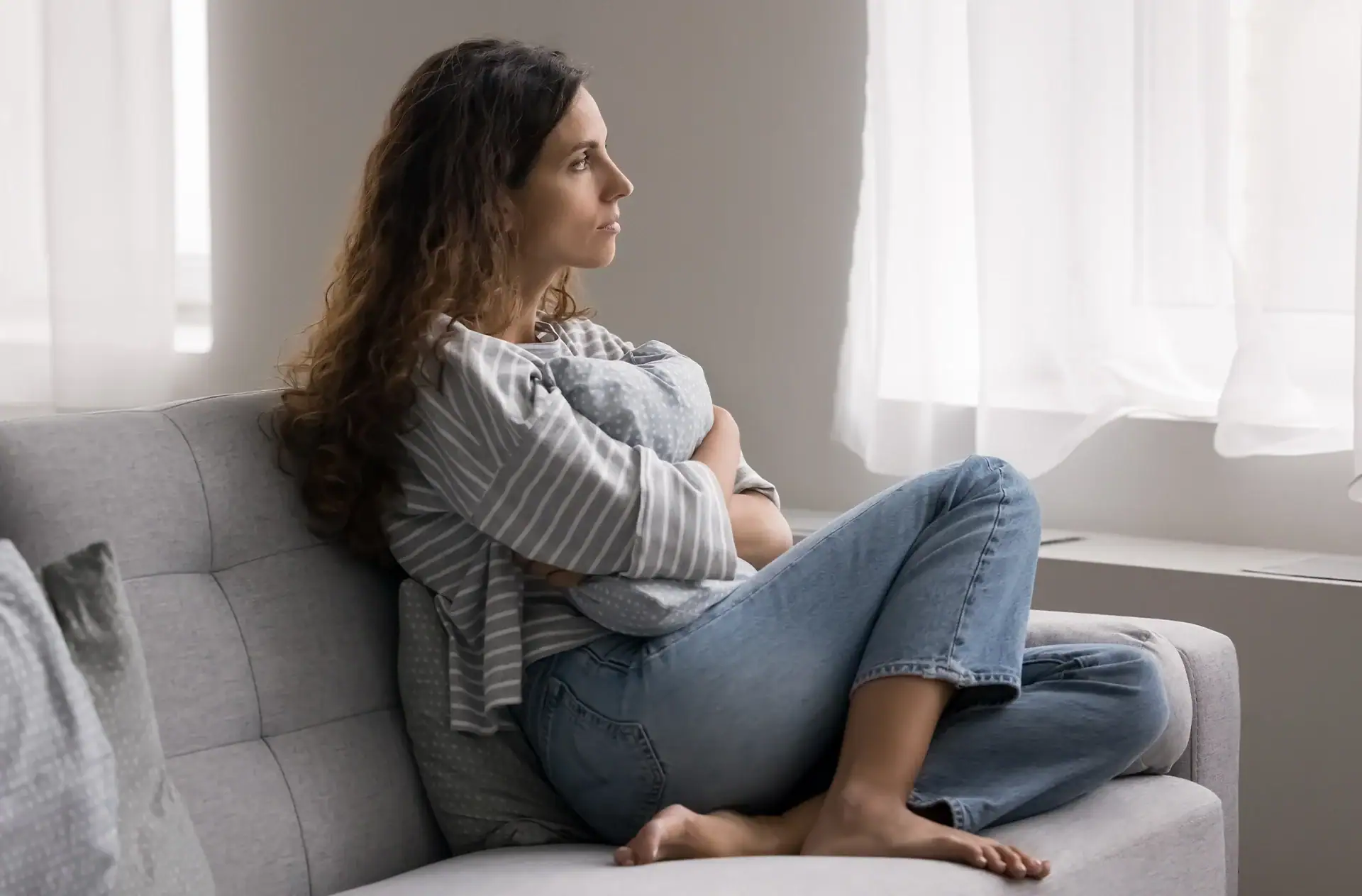
How CBT Fixes Negative Thinking Patterns
Negative thinking patterns can feel automatic. You make a mistake, and your mind jumps to, “I’m a failure.” A partner cancels plans, and you assume, “They don’t care.” Over time, these thoughts become habits, ones that quietly shape how you feel, act, and relate to others.
At Rosen Couples Counselling in Vaughan, we often work with individuals and couples who feel stuck in these loops. The thoughts feel real, but they’re often based on distorted thinking. That’s where cognitive behavioural therapy comes in.
CBT is a structured, practical approach to reshaping how we think so we can improve how we feel and behave. Here’s how it works and how it helps break the cycle of negative thinking.
What Is CBT?
Cognitive behavioural therapy (CBT) is a short-term, evidence-based therapy that focuses on the connection between thoughts, feelings, and behaviours. The core idea is simple: what we think affects how we feel, and how we feel affects what we do.
CBT helps identify and challenge unhelpful thoughts, especially the ones that show up repeatedly and lead to anxiety, low self-esteem, or conflict in relationships.
Unlike other forms of talk therapy that explore the past, CBT is action-oriented. It’s about learning practical tools to manage the present and change future patterns.
What Are Negative Thinking Patterns?
Negative thinking patterns, also called cognitive distortions, are automatic thoughts that are skewed, irrational, or overly negative. They’re not based on balanced evidence, but they feel true in the moment.
Here are some common types:
- All-or-nothing thinking: “If I’m not perfect, I’m a total failure.”
- Mind reading: “I know they’re disappointed in me.”
- Catastrophizing: “This one mistake will ruin everything.”
- Overgeneralizing: “Nothing ever goes right for me.”
- Personalization: “It’s my fault they’re upset.”
- Filtering: Focusing only on the negative and ignoring the positive.
- Should statements: “I should be able to handle this better.”
These patterns are exhausting. They can fuel anxiety, depression, and even conflict in relationships. CBT helps people see these patterns clearly and replace them with more realistic, helpful thoughts.
How CBT Breaks the Cycle
Here’s how CBT works step-by-step to shift negative thought habits:
1. Awareness of Thoughts
The first step is recognizing your own thought patterns. Most people don’t even realize how often negative thoughts pop up throughout the day.
Your therapist might ask you to keep a thought record, writing down:
- What happened
- What you thought
- How did it make you feel
- What you did next
Just seeing these thoughts on paper can be a powerful first step toward change.
2. Identifying Cognitive Distortions
Once you’re more aware of your thoughts, the next step is naming the distortion. Are you catastrophizing? Are you jumping to conclusions without evidence?
Labelling these thoughts helps create distance. It turns “this is true” into “this is a thought I’m having,” which gives you room to think differently.

3. Challenging the Thought
Your therapist will help you question the thought:
- What’s the evidence for and against it?
- Is there another way to look at this?
- Would I say this to a friend in the same situation?
- Is this thought helping me or hurting me?
This process isn’t about pretending everything is fine. It’s about finding a more balanced, realistic view of the situation.
4. Replacing with a Healthier Thought
After challenging the original thought, the next step is creating a more helpful one. That might look like:
- “I made a mistake, but that doesn’t mean I’m a failure.”
- “They didn’t respond right away, but that doesn’t mean they’re upset.”
- “I’ve handled tough situations before. I can get through this too.”
These new thoughts lead to calmer feelings and more constructive actions.
Related Article: 3 Main Reasons You Can’t Express Your Feelings
5. Reinforcing New Patterns
CBT is about repetition. The more you practice catching, challenging, and replacing negative thoughts, the more automatic the new responses become. Over time, this leads to lasting change in how you think and respond to stress, conflict, or self-doubt.
CBT in Couples Counselling
CBT isn’t just for individuals. It’s also effective in couples therapy.
Negative thinking often shows up in relationships as:
- Misinterpreting your partner’s tone or silence
- Taking things personally
- Expecting the worst during disagreements
- Assuming rejection or abandonment
- Believing “this always happens” or “they never change”
At Rosen Couples Counselling, we help partners identify these internal patterns and how they influence communication and behaviour.
By learning CBT tools together, couples can:
- De-escalate arguments
- Avoid misunderstandings
- Respond rather than react
- Build trust through clearer thinking
It’s not about blaming your thoughts but about understanding how they shape your reactions and giving you more control over your emotional responses.
Related Article: How to Improve Communication in Marriage: Best Practices from Experts
CBT Is Practical and Proven
Research consistently shows that CBT is one of the most effective treatments for:
- Anxiety
- Depression
- Panic attacks
- Social anxiety
- Relationship stress
- Low self-esteem
- Anger issues
It’s backed by decades of evidence and is widely used in both individual and couples therapy settings. It works because it’s simple, structured, and based on real-world thinking.
You don’t have to wait until your problems are overwhelming. Many people benefit from CBT even when they’re just feeling stuck or reactive.

What a CBT Session Looks Like at Rosen Couples Counselling
At Rosen, we use CBT tools in both individual therapy and relationship-focused counselling.
A typical CBT-focused session includes:
- Reviewing recent situations that triggered distress or conflict
- Identifying the thought patterns involved
- Challenging and reframing those thoughts
- Practicing communication strategies (for couples)
- Creating action steps or coping strategies for the week ahead
Our approach is collaborative, structured, and goal-focused. You won’t just vent about problems, but you’ll work toward real solutions with guidance every step of the way.
What Makes CBT Different?
CBT stands out because it doesn’t rely on abstract theories or digging endlessly into the past. It gives you practical tools that can be applied right away.
You learn:
- How to pause before reacting
- How to question your assumptions
- How to speak to yourself with clarity instead of criticism
- How to solve problems instead of spiralling into blame or fear
It helps you shift from emotion-driven responses to thoughtful actions, which can be life-changing both individually and in relationships.
Related Article: What Is Emotionally Focused Therapy for Couples
You Can Change How You Think
Negative thinking isn’t a personality flaw. It’s a habit, and habits can change.
With CBT, you don’t have to believe everything your brain throws at you. You can learn to slow down, question the story, and choose a better response.
At Rosen Couples Counselling, we use CBT as part of a larger process to help people improve their relationships, manage stress, and rebuild trust with themselves and each other. Whether you’re navigating anxiety, facing conflict, or just feeling stuck in negative loops, CBT gives you a clear, proven way forward.
Prepared to break out of negative thinking loops? We use proven CBT strategies to help individuals and couples build healthier thought habits and stronger relationships.
Book a session today and look forward to a lasting change.

